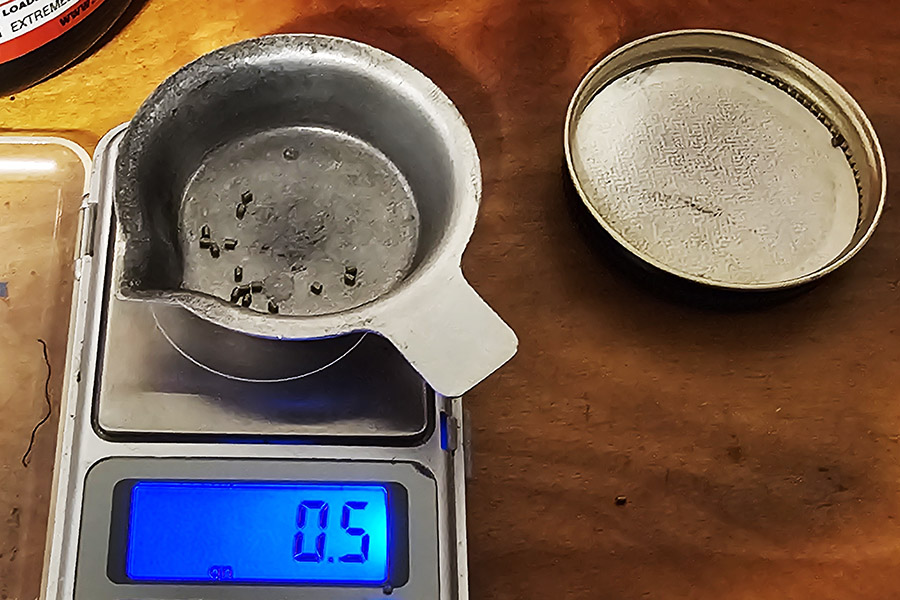By Joe Cota
A quick preface before you read Joe Cota’s blog: Wow, we are up to three Joes on ExNotes…Joe Gresh, me, and now, Joe Cota. Joe Cota has contributed a few blogs to us previously (before we implemented our new writers program). When Joe most recently sent this in, I felt it was time to include him as one of our regulars, and with this blog, he is. Joe is one of the good guys. He is a professional geologist, an active off-road racer in Baja California, a handloader and bullet caster of 18 years, and an avid flintlock rifle and pistol shooter. Joe lives in the San Bernardino Mountains of Southern California. When not working or racing trucks and buggies in Mexico, Joe can be found fly fishing at his summer home on the Henry’s Fork River in eastern Idaho.
– Joe Berk
Written on Christmas Day, 2023
Merry Christmas to all 🎄❄️🎅!
A lot of you will be casting and handloading today, some with their new reloading equipment! Here’s something for your consideration that came up on another message board. Powder weight weenies will argue that all handloaders MUST unequivocally weigh each and every single powder charge to one tenth of a grain of powder or less. Some wildly claim that a half-grain (0.5-grain) of powder makes a 50 to 100 feet per second difference or more in rifle cartridge velocity while others often use this as flawed reasoning as back-up for claiming that volume-based powder dispensers, such as the Lee Auto Disc used on turret presses, are highly inaccurate and produce terrible and unacceptable ammunition. This could not be further from the truth! Let’s bust some reloading myths.
The variation that my ancient Lee Auto Disk throws is about 0.1 to 0.2 grain, depending on if I am using ball powders versus extruded powders. The photos below is what 0.5 grain of Hodgdon H4831 SC extruded rifle powder looks like. For reference, the variation in powder charges that my Lee Auto Disc throws is less than half of the 0.5 grain of H4831 shown in the photo.


So what does a half-grain of powder actually mean in terms of velocity in a typical big game hunting rifle? Let’s explore a real life example. I load .300 Weatherby Magnum ammunition with 168-grain bullets and H4831SC powder. Per the Hodgdon Reloading Data Center, the starting load is 74 grains (which provided 2,865 feet per second in their test rifle) and the maximum load is 81 grains (which provided 3107 feet per second in their rifle). That’s a 242 feet per second difference in velocity over a full 7-grain powder spread. Interpolating these results linearly (a 242 feet per second velocity difference over a 7-grain propellant spread) means that each additional grain of propellant over the minimum powder charger yields an additional 34 feet per second. Therefore, a half grain of powder would make only 17 feet per second difference in velocity! Everyone who uses a chronograph knows that 17 feet per second is typically only a fraction of the extreme velocity spread most rifles and rifle ammo produce.
What about pistol handloads? Take the .45 Colt, using a 255-grain cast lead bullet and Winchester W231 ball powder. The starting load is 5.1 grains (which provides 677 feet per second) and the maximum load is 6.9 grains (which provides 917 feet per second). Using the same methodology as the above rifle computations and comparisons, each 0.1 grain of W231 powder equates to only about 13 feet per second. Again, this is far less than the extreme spread one can expect in .45 Colt ammo.
Does case size matter? I believe it does, but not that much. Take the .223 Remington cartridge, for example, loading 55-grain Hornady bullets with Winchester 748 powder. Straight from the Hornady manual (the 7th Edition), 1 grain of powder between starting and max loads for this combination is 100 feet per second per grain of powder, or 10 feet per second for each 0.1 grain. And again, 10 feet per second is only a fraction of the extreme spread one could expect from perfectly identical powder charges.
So variations in powder volume does matter a little more in the smaller rifle cartridges, but not enough to make anyone steer clear of auto powder dispensers on turret presses versus individually weighing each charge. Richard Lee was right when he wrote in his Modern Reloading book that powder volume is more critical than weight and that one should periodically weigh a charge only as a double check for volume.
So there’s little justification for being a Tenth of a Grain Weight Weenie! Don’t be THAT guy who bashes turret press and powder dispenser users based on misconceptions posted by folks on the Internet.
Happy handloading and a prosperous new year to all!
Never miss an ExNotes blog:



